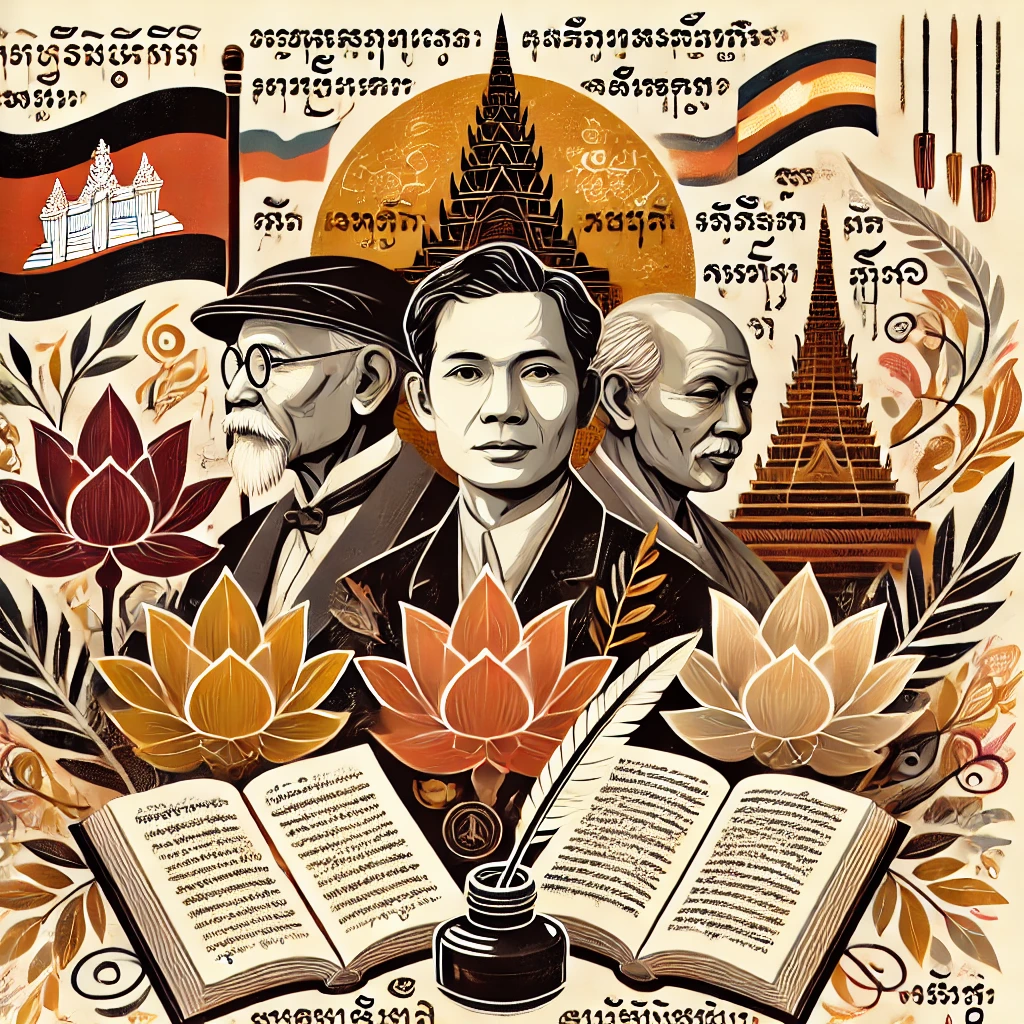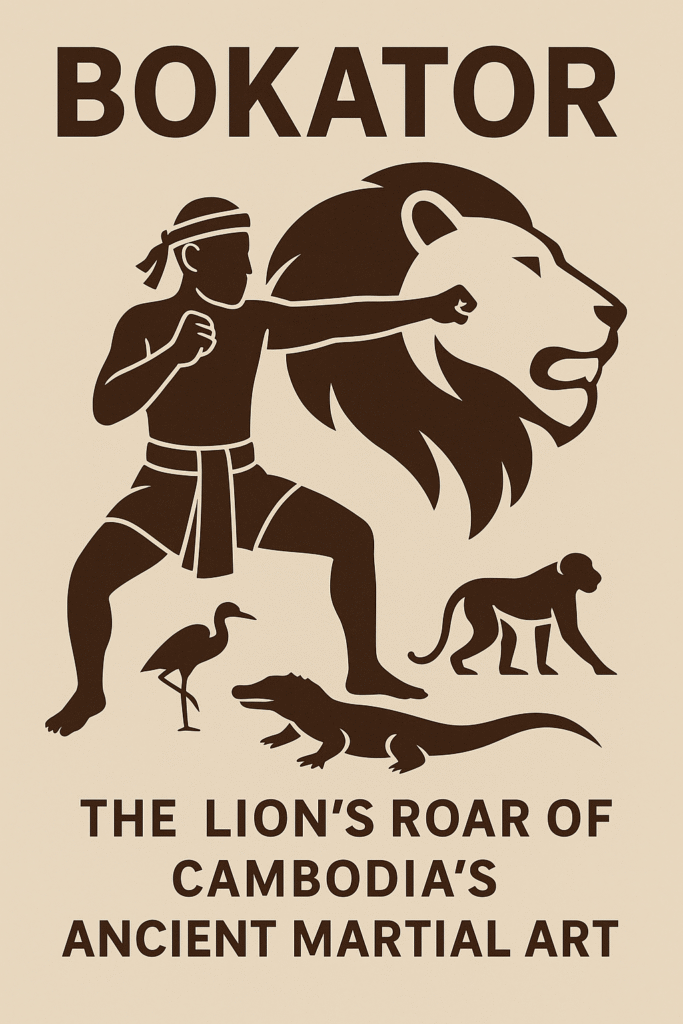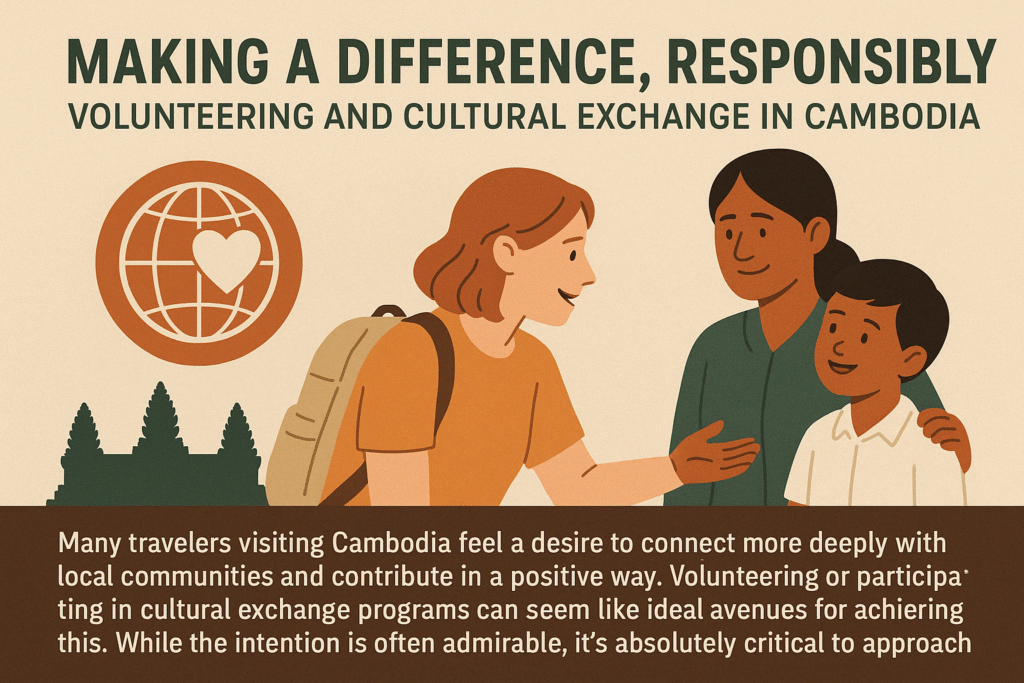Introduction
Cambodia’s rich literary tradition spans centuries—from ancient palm leaf manuscripts to modern novels and poetry. Despite wars and repression, Cambodian writers and poets have kept the soul of the nation alive through words. This article highlights legendary figures, the cultural role of poetry, and the resilient revival of Khmer literature.
1. Krom Ngoy: The Father of Khmer Poetry
Krom Ngoy (1865–1936), also known as “Neak Preah Loke,” was a gifted poet and Chapei Dong Veng performer. His wisdom-filled verses, delivered through traditional melodies, offered moral guidance on life, family, and society. He earned royal recognition and remains an icon of Khmer poetic expression.
Illustrated Infographic:
Portrait of Krom Ngoy holding a chapei dong veng, surrounded by flowing verses on scrolls, with a rural backdrop of palm trees and buffalo carts.
2. Nou Hach: Cambodia’s Modern Novelist
Nou Hach (1916–1975) played a major role in shaping modern Khmer literature. His acclaimed novel “Phka Sropoun” (The First Flower) is a poignant depiction of Cambodian social customs, love, and class barriers. He was also a respected diplomat and linguist.
Illustrated Infographic:
A blooming sropoun flower over an open book titled “Phka Sropoun,” with layered imagery of 1940s Phnom Penh and Khmer script in the background.
3. Soth Polin: Revolutionary Voice in Khmer Literature
Soth Polin (born 1943) is known for his bold, controversial works exploring existentialism, sex, politics, and Buddhism. His famous novel “The Anarchist” (Mlob Preah) broke literary taboos and mirrored Cambodia’s chaotic transition in the 1970s. Today, he’s recognized as a fearless pioneer of Cambodian literary modernism.
Illustrated Infographic:
Soth Polin’s silhouette in front of a blazing typewriter, juxtaposed with temple ruins and city skyscrapers symbolizing tradition and rebellion.
4. The Role of Poetry in Traditional Khmer Storytelling
For centuries, Khmer poetry wasn’t just for beauty—it was a vessel for oral history, Buddhist teachings, and community values. Verses were often sung or recited during temple ceremonies, weddings, and folk storytelling performances such as yike or chapei dong veng.
Illustrated Infographic:
A traditional storyteller under a village tree, children gathered around, with visual poetry lines flowing like musical notes through the scene.
5. The Khmer Rouge and the Silence of the Pen
The Khmer Rouge regime (1975–1979) decimated Cambodia’s intelligentsia. Writers, poets, and artists were among the first to be targeted. Libraries were destroyed. Yet, in the aftermath, literature became a tool for healing and remembering.
Illustrated Infographic:
A burning book transforming into lotus petals, floating upward from a shadowed prison structure marked “S-21.”
6. The Revival of Khmer Literary Culture in the 21st Century
In recent decades, Cambodia has seen a literary resurgence. Young writers are producing novels, poetry, and blogs. Organizations like PEN Cambodia and the Nou Hach Literary Association nurture this revival. New voices are emerging, blending Khmer tradition with global themes.
Illustrated Infographic:
A tree with Khmer script as leaves growing from an ancient stone base—its branches connecting to a laptop, smartphone, and books.
Conclusion
Cambodian literature is a mirror of the nation’s soul—reflecting its glories, sufferings, and dreams. From Krom Ngoy to today’s young bloggers and poets, these voices continue to shape and safeguard the cultural identity of Cambodia.



